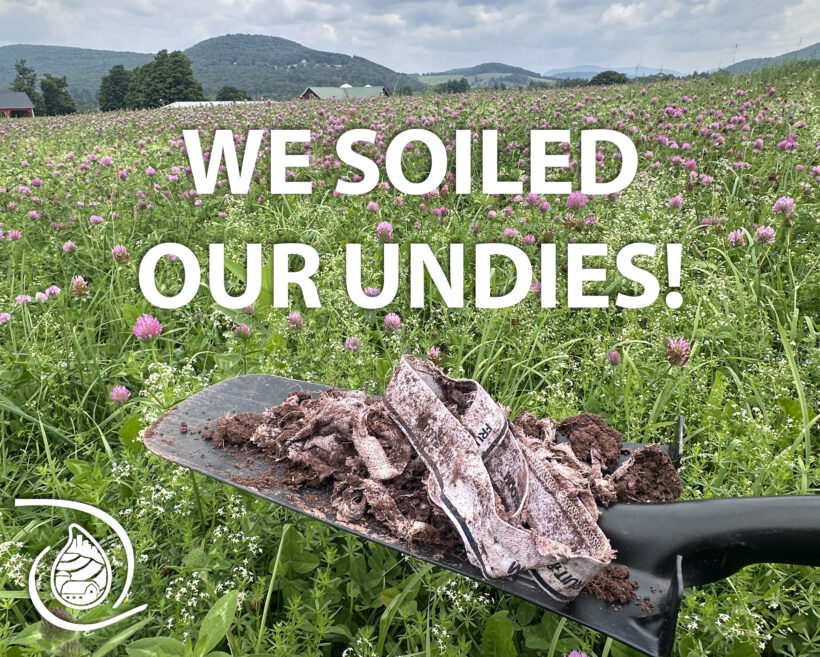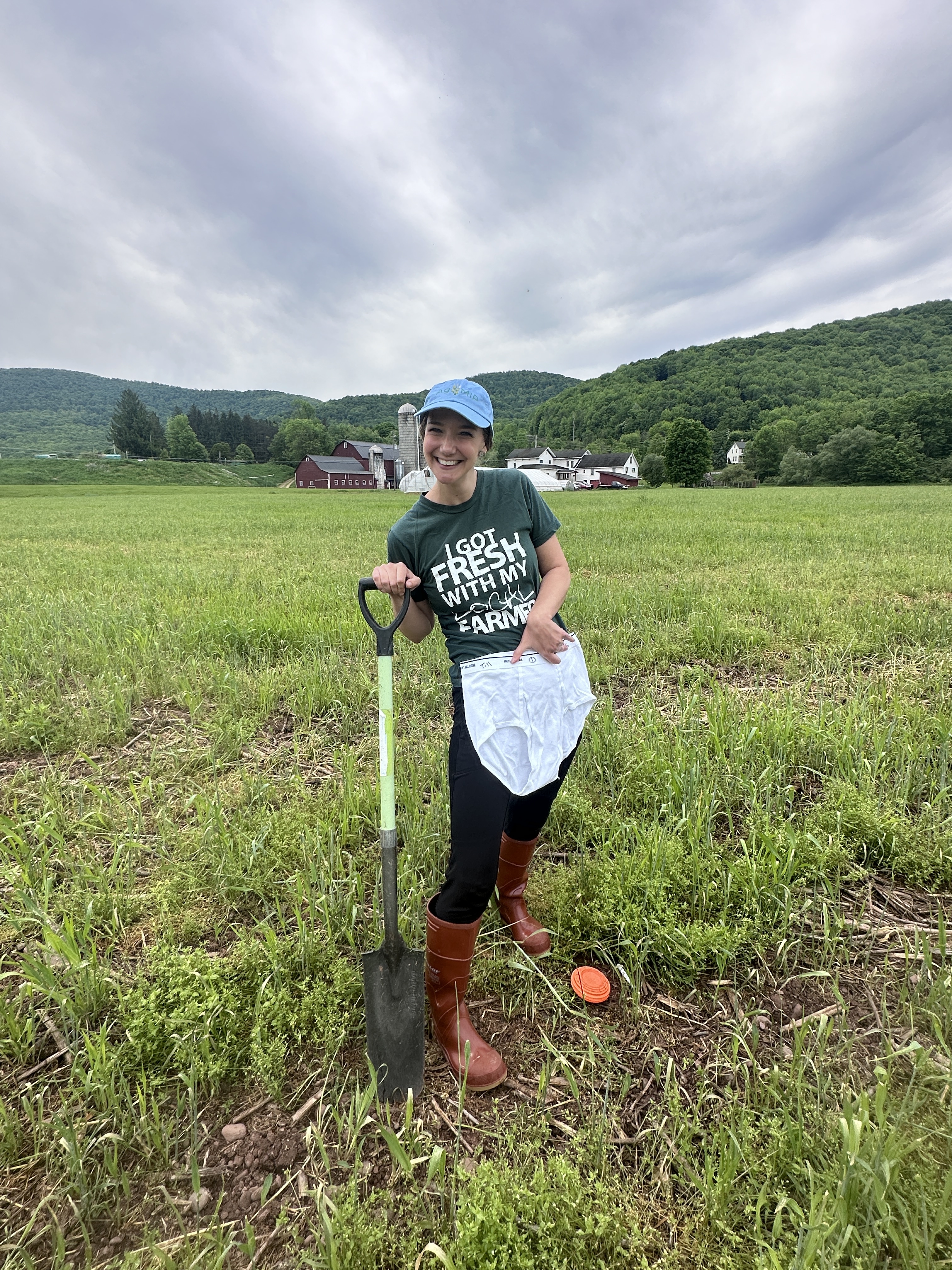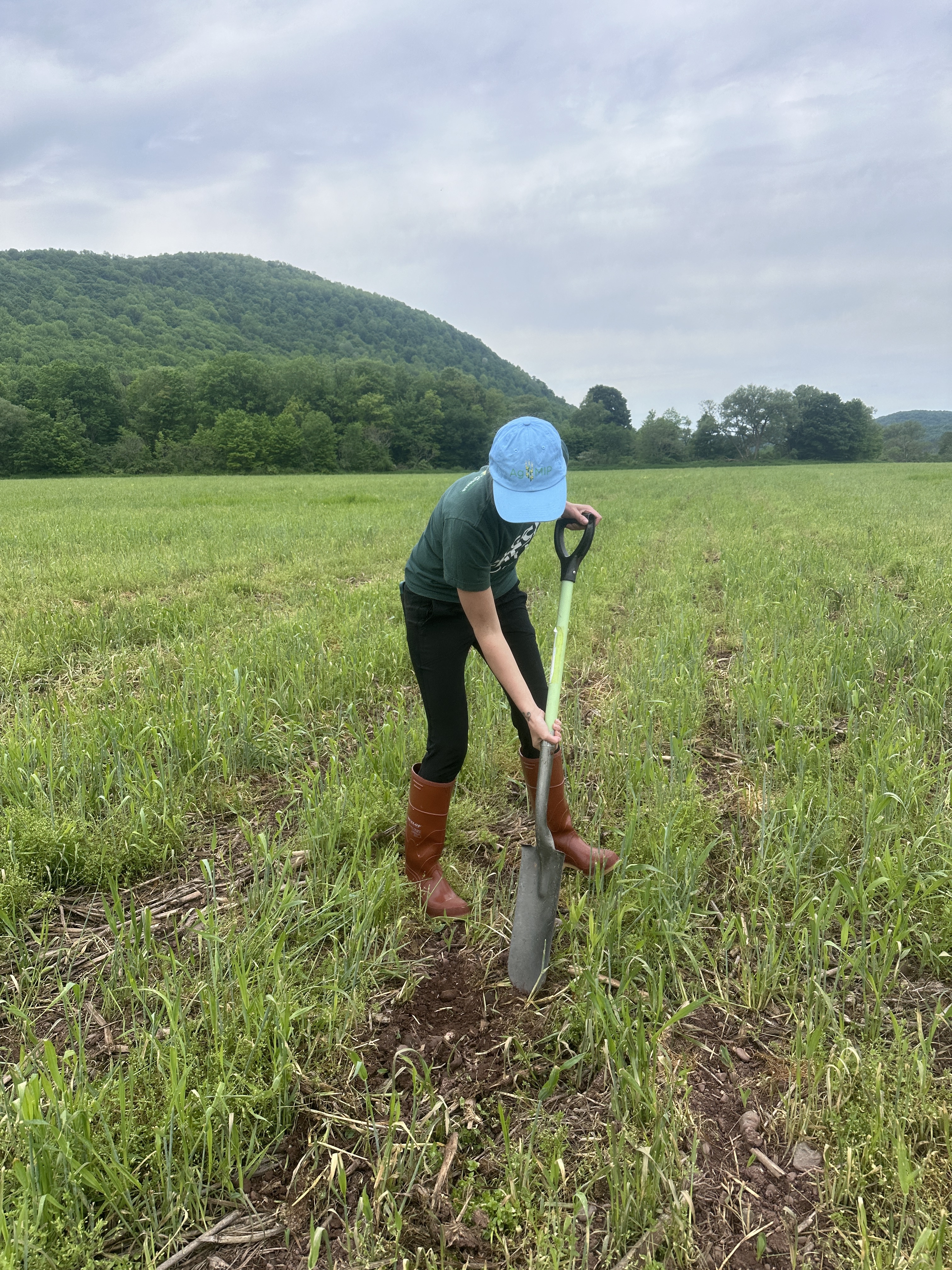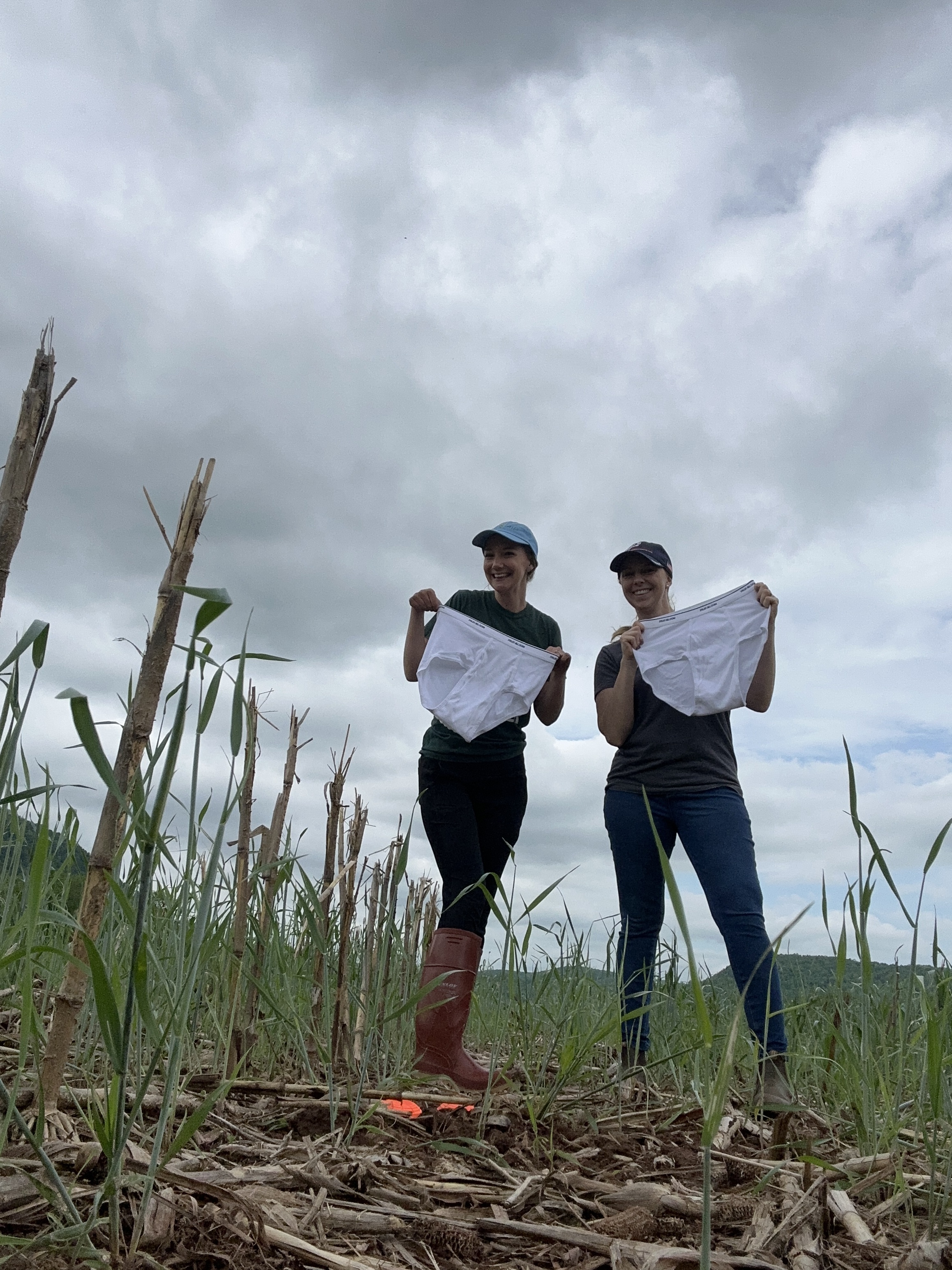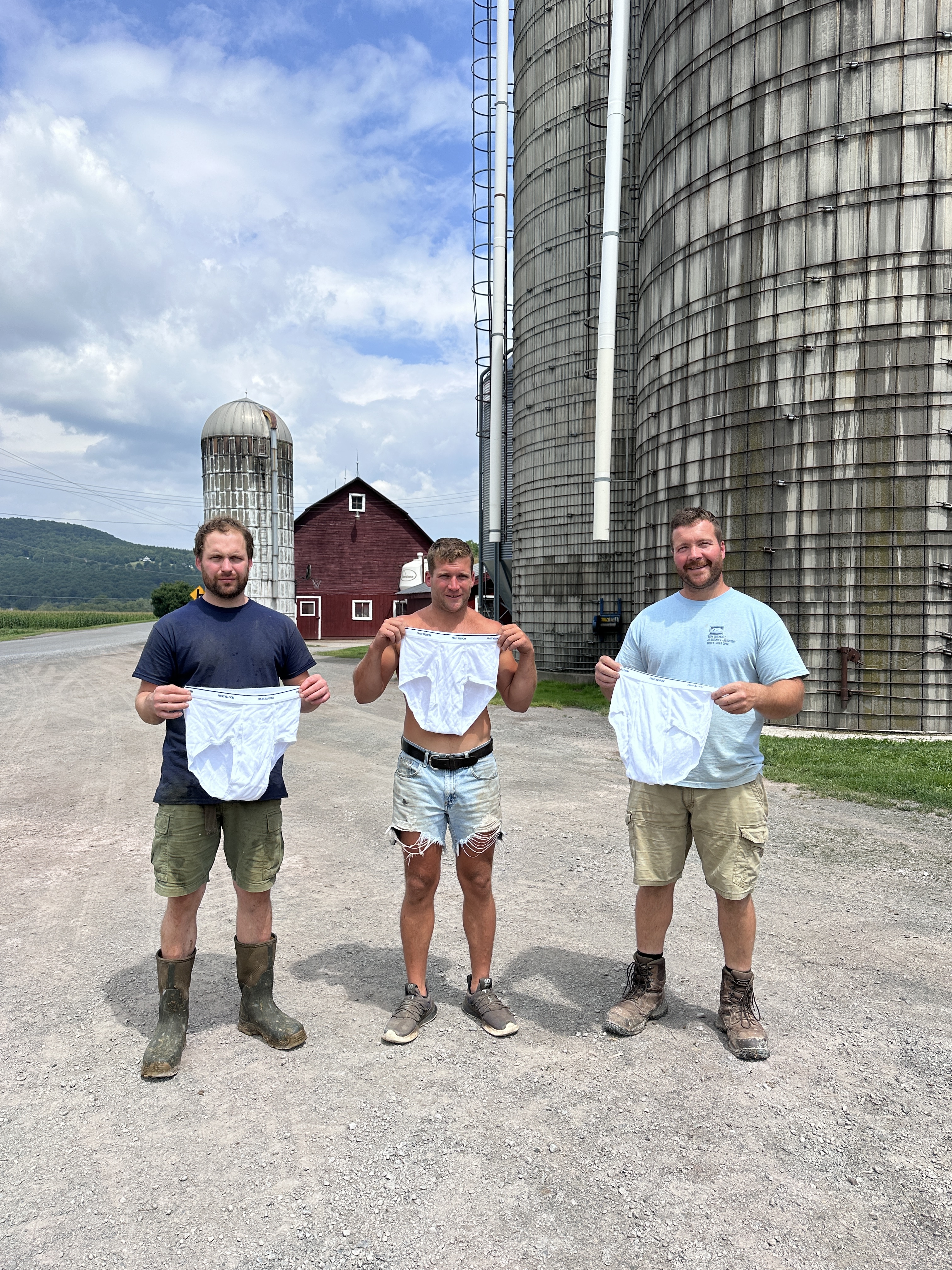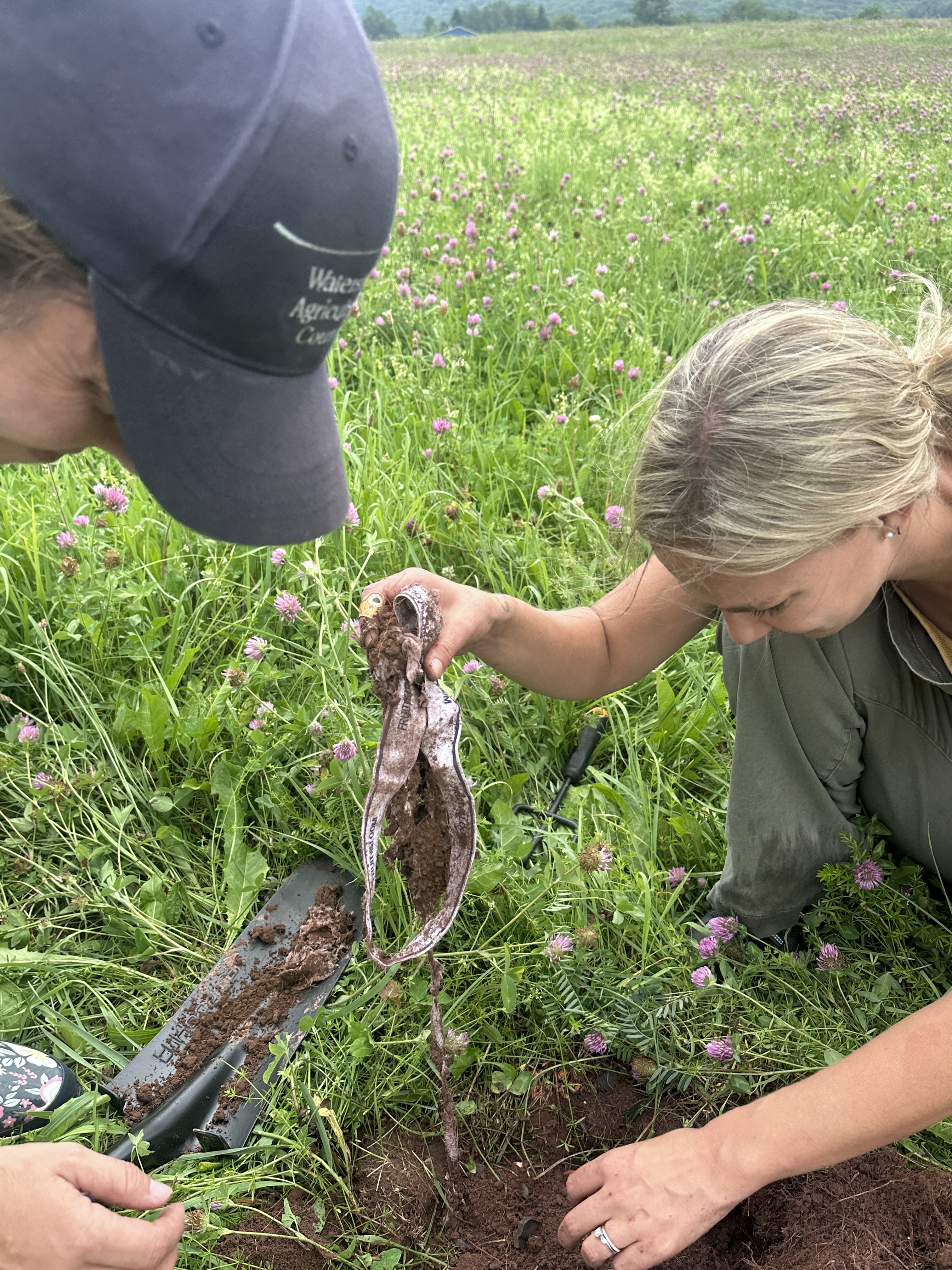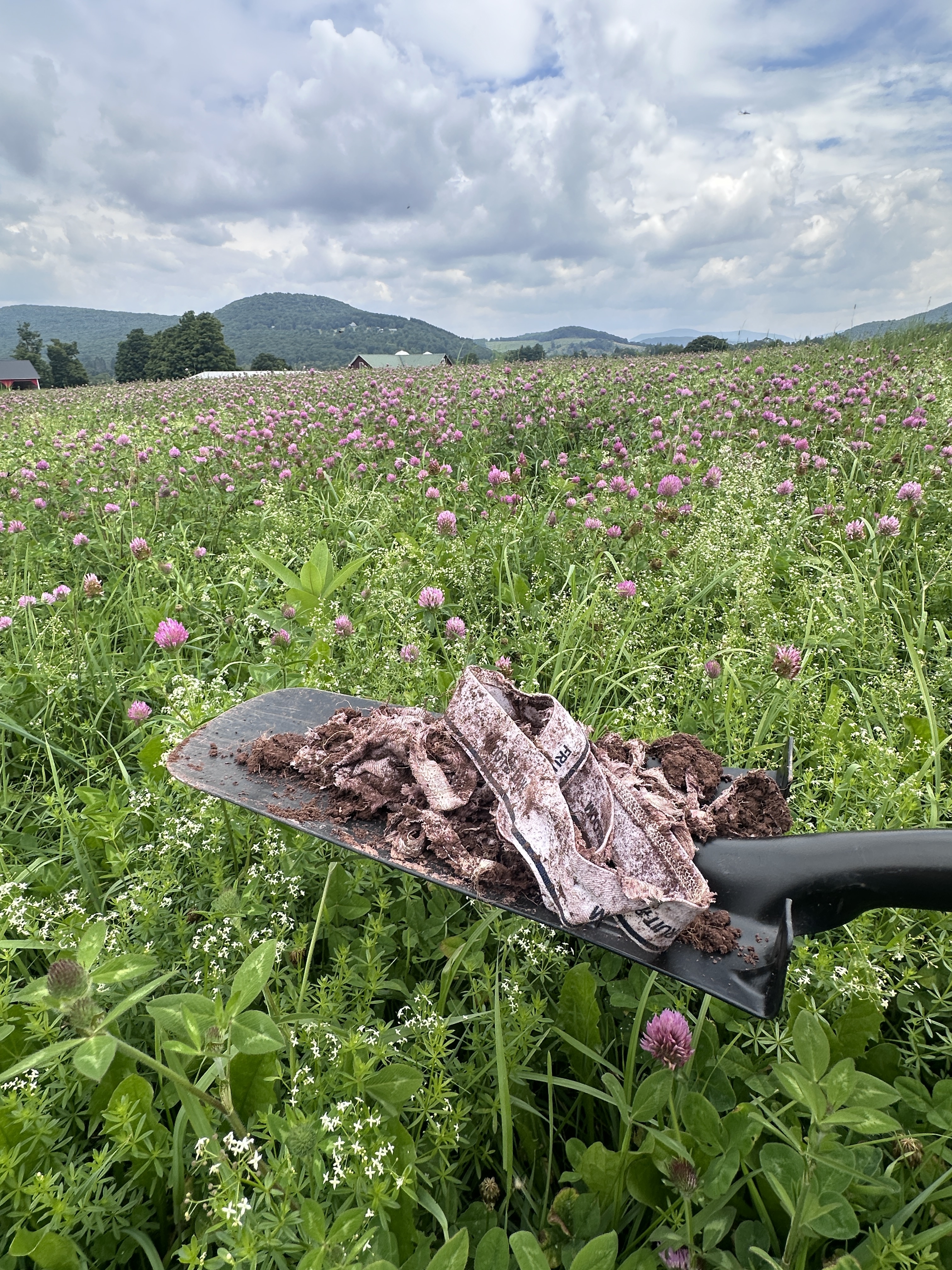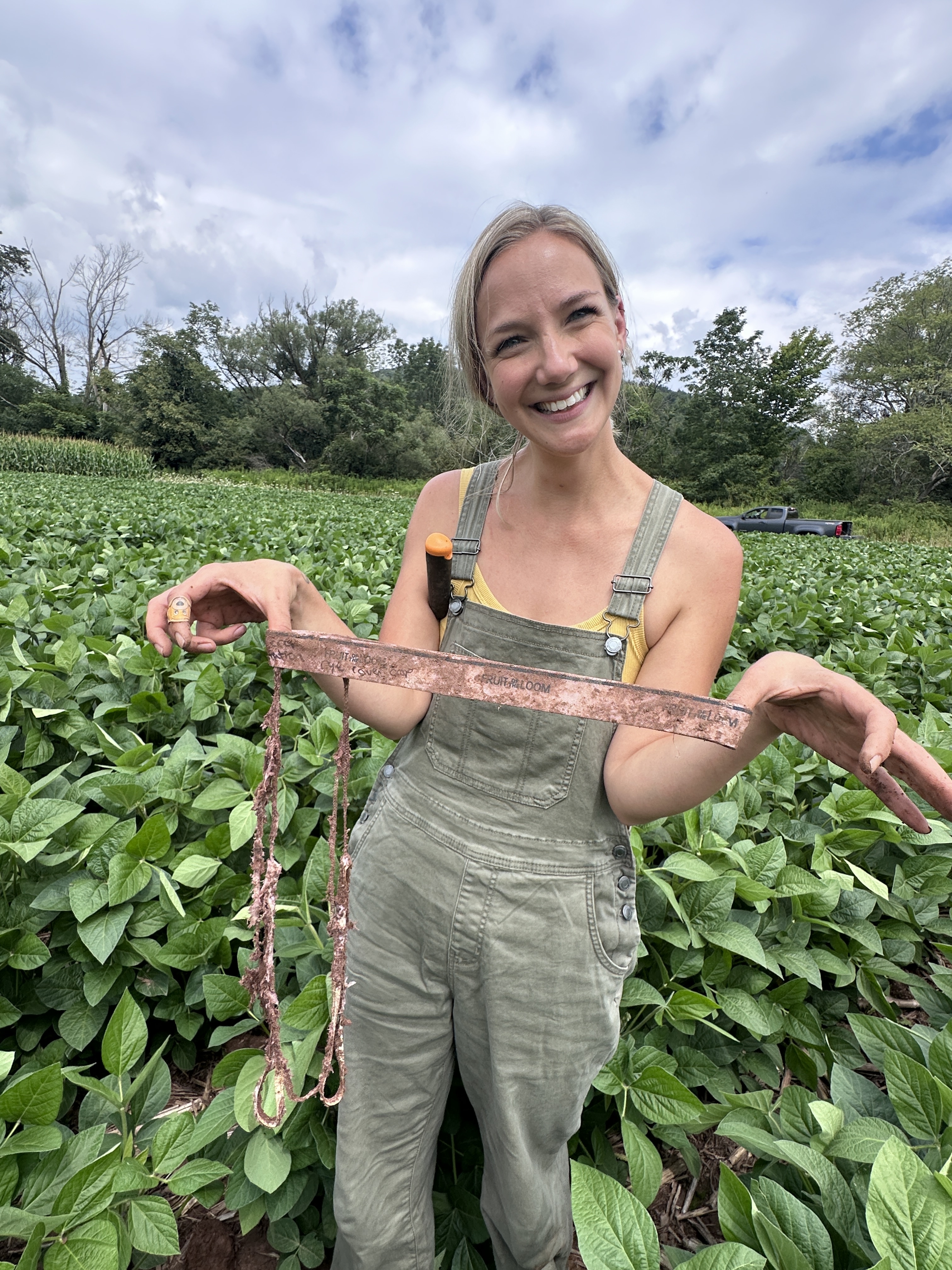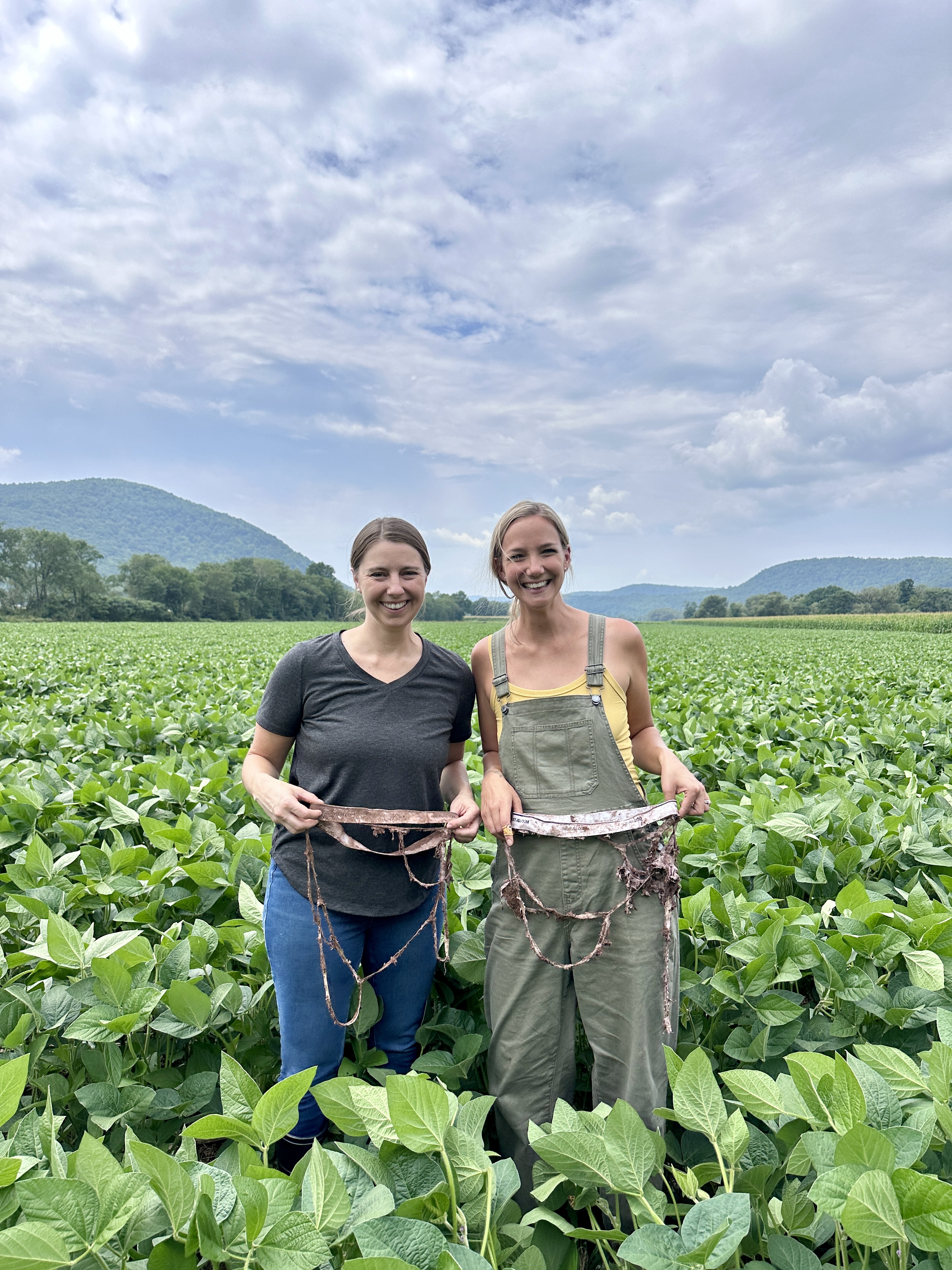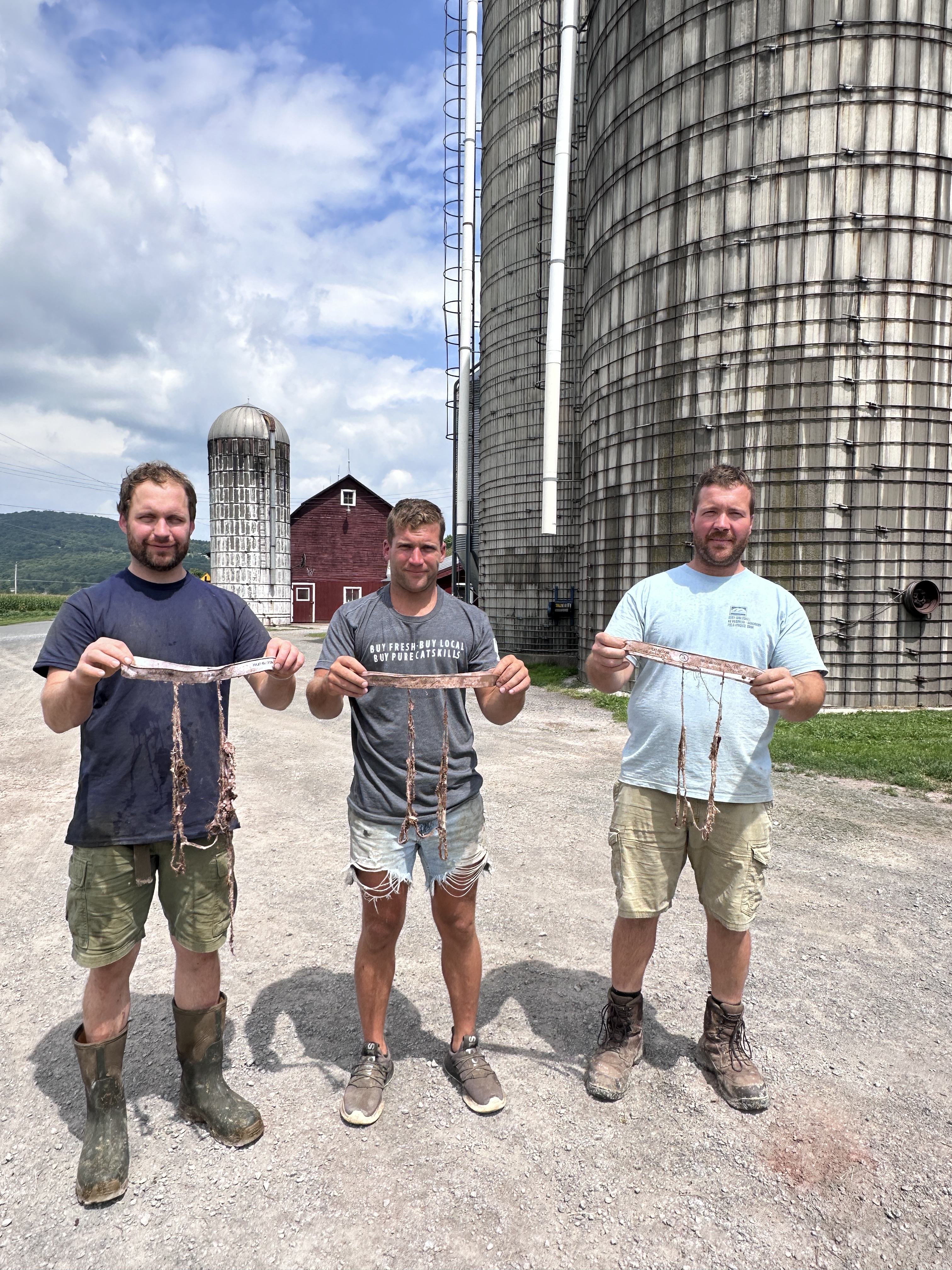Our undies are all chewed up and that’s just the way we like it. The more the underwear is deteriorated, the healthier the soil!
Microbial Action
Undies won’t break down in just any soil. Healthy soils are full of life, diversity, and billions of microbes that consume organic matter, like cotton underwear! In addition to chowing down on organic matter, soil microbes play an important role in crop and soil health. Soil microbes have three main roles:
1. Decomposition of organic matter
2. Nutrient cycling and stimulating plant growth
3. Promoting and stabilizing soil aggregates and structure
Nourish your Microbes
The hungry microbes in your soil need food, shelter, and variety to thrive, just like us! You can take care of your microbial friends by following these three steps:
1. Avoid soil disturbance wherever and whenever possible.
2. Maximize soil cover with living plants and residue.
3. Maximize biodiversity by growing a variety of plants and
managing integration of livestock or manure.

Management Tools for Healthier Soil
Farmers can follow these principles by adopting management practices like crop rotation, cover cropping, conservation tillage like no-tillage or reduced tillage, integrated crop livestock systems, and optimized nutrient applications.
For example, maximizing soil cover with living (cover crop) or decomposing (compost) plant residues can stabilize soil particles thereby reducing erosion and soil crusting while also promoting crop germination and emergence.
Implementing year-round rotations with cash and cover crops keeps living roots in the soil which can increase soil carbon. Roots release carbon-rich exudates that serve as food for beneficial microbes, increasing their abundance and diversity. Heightened microbial activity, coupled with minimized soil disturbance, favors stable aggregate formation and improved soil structure.
Well-structured soil with adequate pore space can enhance water infiltration while reducing compaction and erosion. Importantly, it is essential to understand these principles within the context of your land and agricultural production system. This contextual understanding is critical for practical and relevant land stewardship. (These tips are from USDA NRCS.)

